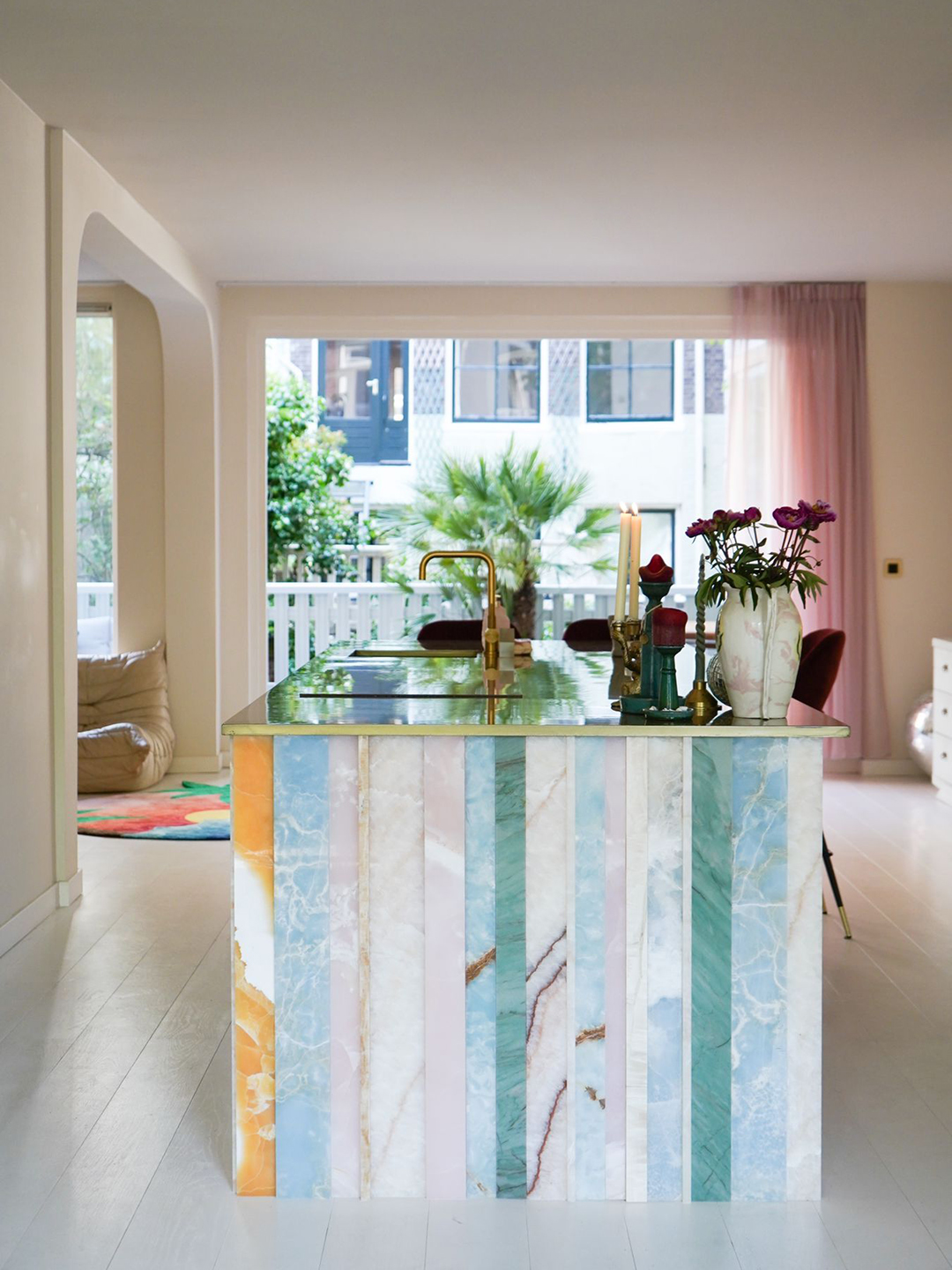We may earn revenue from the products available on this page and participate in affiliate programs.
Part of designing a kitchen island is deciding what goes in it. Recycling bins? Refrigerator drawers? Hidden outlets? The other half of the equation is choosing what goes around it. Open shelving, seating, or just a streamlined waterfall edge are all popular options. But for Bettina Neseker, an Amsterdam-based interior stylist and the founder of Studio Vacay, wrapping her new kitchen island in a slab of Calacatta Viola or leaving an overhang for barstools wasn’t exciting enough.
“There was one thing I did not want in my kitchen, and that was marble. I saw that too much and wanted something different,” says Neseker. One day while at a coffee shop, she spotted a countertop clad in different colored strips of onyx. “I knew this was perfect for my kitchen island,” she says. There was no doubt as to where she would find the natural stone: Solid Nature, a Dutch company that’s been around since 2011 and specializes in sourcing unique, colorful stones (its immersive installation during Milan Design Week this year won the award for most unforgettable exhibit).

And much like at Salone, the stones featured in Neseker’s home are hard to get out of your head. She chose 10 hues in total and ran the strips down the sides of the island as well as around the top edge, just underneath the countertop. “I chose more colors, to make the island the centerpiece of my house, but you can also just go for two different colors if you want the kitchen island to be subtler,” says Neseker, adding that her favorite shade is the light blue, “but I like every color to be honest.” To give it a 3D effect, she had the slivers cut to varying widths (ranging from 2 to 12 centimeters) and thicknesses.


The best part about Neseker’s island is that it was a lot more affordable and sustainable than purchasing full slabs of stone (you can expect to pay $1,000 to $2,000 extra for a fabricator to make a waterfall edge using natural stone). “They’re leftover chunks,” she points out. It never hurts to go to your local stone shop and open with: “Give me what you can’t sell.”

